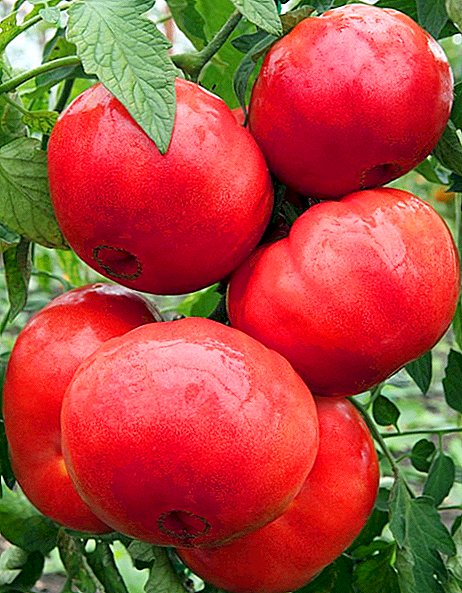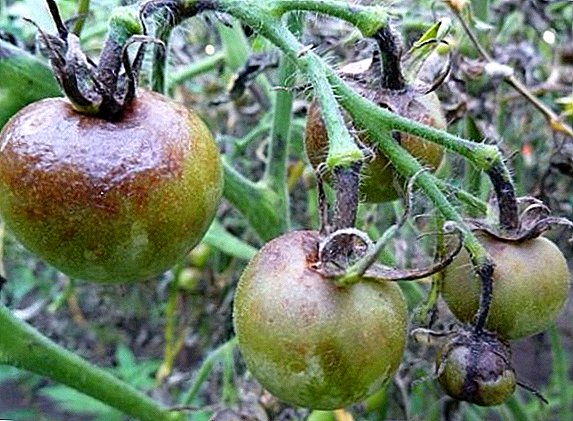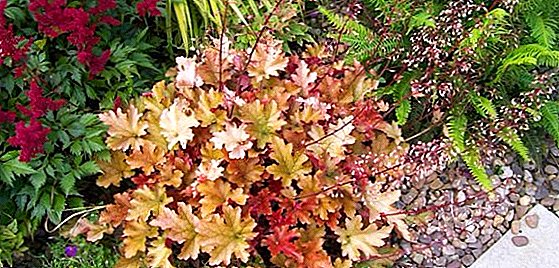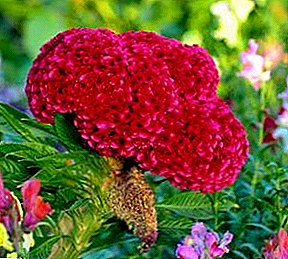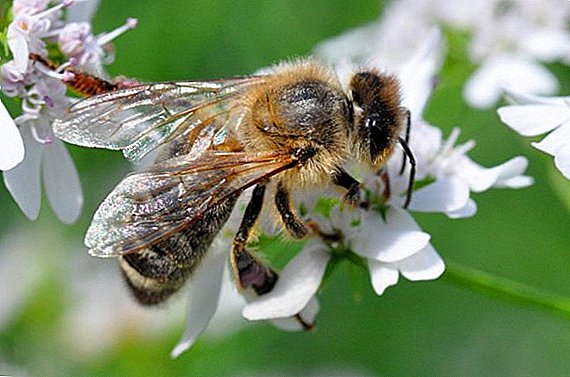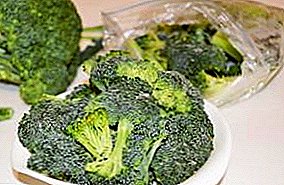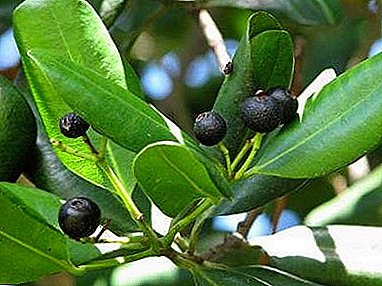
The plant, the dried fruits of which are known to us as sweet peas (or still Jamaican pepper), is actually called Pimenta officinalis (Latin Pimēnta diōica) or Pimenta dioma (Latin Pimenta officinālis). Learn more useful things about growing allspice.
About plant
Consider what is allspice and where is its birthplace.
According to one source, islands are considered the birthplace of medicinal and its varieties. Caribbean. Other sources call Central and South America and even India. Be that as it may, in all of the above geographical regions, it successfully grows and is cultivated.
Even the Aztecs used allspice as seasonings and drank tea from it to improve digestion. And since the time of Columbus, this plant has spread throughout Europe and has become popular. There was even a name "english pepper", under which also meant allspice.
REFERENCE! Pimenta officinalis is a large evergreen and can reach a height of 10 meters or more.
In countries where drug pimenta is cultivated, it is grown on special plantations. Fruits are harvested by hand before ripening.
The fact is that in a ripe form, they quickly lose their flavor. They are then dried in a dryer or in the sun for 5-10 days. During this time, the color of the fruit changes from blue-green to brown, dark brown. And peas are becoming similar to the familiar, familiar to us allspice.
At the last stage of processing, the fruits are peeled and sorted. Next, peppers allspice fall on the shelves in whole or ground.
See how it grows in the photo below:



What are the differences from black pepper?
REFERENCE! Black pepper is a liana.
Consider what it is like black pepper peas.
Please note that fragrant and black are not names of the same, but completely different plants. Black (lat. Piper nigrum) - liana-like plant from india, belongs to the family Peppery. Whereas Pimenta - to the family Myrty. Black peppercorns are small, shriveled.
Sweet Pepper Peas big. If you shake them lightly, you can hear the seeds rustling inside. The seeds themselves are dark brown. They look like seeds of Bulgarian pepper, but much larger. And the biggest difference between black and fragrant peppers is in taste and aroma.
They smell differently. In addition, black pepper has a pungent spicy taste. A fragrant less hot, more fresh, and in it, it would seem, a whole combination of spices: notes of cinnamon, cloves, nutmeg are felt. Therefore, allspice is considered a universal seasoning and has a wider application in cooking.
Growing at home
We now turn to the question of how to grow allspice at home.
 Of course, it is extremely difficult to grow from a pea pulled out of a bag with seasoning.
Of course, it is extremely difficult to grow from a pea pulled out of a bag with seasoning.
It is already dried. It is necessary to acquire seeds that can be purchased at gardening stores or at fairs.
It is best to plant this plant in the spring, in March-April, as well as other seedlings. You need to soak them for a day in warm water (about 50 degrees). Due to the fact that the seeds have a strong peel, there is even a point of view that the peel should be pierced with nail scissors to improve germination.
Next, sow in the sand for germination. The sand must be constantly wet. Optimum air temperature: 20 -28 degrees. When the seeds germinate, they need to be transplanted into a separate container with nutrient soil.
It can be a mixture of garden land, peat and land with humus. Or you can buy ready-made soil. But since the special soil for myrtle hardly meets, you can buy soil for palm trees. Plant need to depth 2-3 centimeters. If you plant in one container, the distance between the seedlings should be at least 10 cm.
The plant does not like cold, you need to put the container in warm and bright a place. You can put a piece of glass or polyethylene on top to create a greenhouse effect. Do not forget about regular watering.
If the tips of the leaves turn black, it means that watering is insufficient. And if they turn yellow, the opposite is excessive, either there is not enough nutrients in the soil, or the air is too dry. For fertilizing is quite suitable universal fertilizer for window plants.
Later pimento can be planted in the ground. This also needs to be done in spring so that the plant has time to harden in the soil before the start of hot summer days.
Since this is a thermophilic plant, it is better to plant it in a greenhouse, or on a glazed loggia.
 You should not plant this plant in the country or in the garden, if the air temperature in winter you fall below 10 degrees, because pimento - south a guest.
You should not plant this plant in the country or in the garden, if the air temperature in winter you fall below 10 degrees, because pimento - south a guest.
The temperature of the air when you disembark should be at least 20 degrees The distance between the seedlings of sweet peas - not less 14 see Replant the plant along with the soil in which it grew. This will help the adaptation process.
The pests are dangerous: a scythe, a whitefly, aphid, and all the "favorite" spider mites. But, fortunately, there are means to combat these pests, which have long proven themselves.
These can be either folk remedies (for example, an infusion of onion peel) or chemicals from gardening shops.
Pimenta does not need in pruning. However, it is necessary to remove the flowered inflorescences when it begins to bloom. The plant loves light, heat and fresh air, but direct sunlight can be harmful. Like the shadow.
Some gardeners recommend transplanting adult plants. once in 3-4 years. Or at least make an annual replacement of the upper layer of the earth.
Propagated pimento seeds. Ripe seeds are red.
About properties
Below are the beneficial properties of allspice.
Allspice peppers are high in content essential oils. It contains vitamins A, B1, B2, C; minerals such as calcium, magnesium, zinc, selenium.
However, allspice may cause an allergic reaction. And most importantly, it is a spicy spice. Therefore, do not abuse it in large quantities.
 As for the use in cooking, allspice, in the form of a hammer or in the form of peas, is added to a variety of dishes, starting with ravioli and soups, to grilled meat, fish, marinades. And in a small amount of allspice can be added to confectionery, fruit compotes, puddings.
As for the use in cooking, allspice, in the form of a hammer or in the form of peas, is added to a variety of dishes, starting with ravioli and soups, to grilled meat, fish, marinades. And in a small amount of allspice can be added to confectionery, fruit compotes, puddings.
In the novels of the popular writer Joan Harris "Chocolate" and "Candy slippers" mentioned the addition of allspice in special chocolate recipes to give it a unique taste and "magic" properties.
Allspice helps with flatulence and in the treatment of rheumatism.
Raw allspice is used in medicine to create antiseptics, in the cosmetic industry, in the manufacture of perfumes and soaps.
- All about pepper peas.
- Black pepper: features of cultivation, as well as the benefits and harm of popular seasoning.
- Growing white peppercorns at home.
- Ready seasoning on your windowsill - green pepper-peas.
Allspice differs from other types of pepper and is made from a special plant of the Myrtle family. He has unique properties, and a skilled gardener will be able to grow it on his own.


